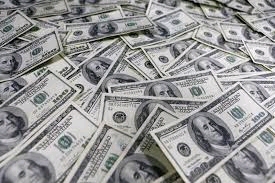Unveiling the Key Benefit of Joining Freemason for Lifelong Friendships
Unveiling the Key Benefit of Joining Freemason for Lifelong Friendships
Blog Article
Checking Out the Mysteries of the copyright: What You Need to Know
The copyright, a term usually shrouded in intrigue and controversy, stands for a complicated tapestry of historical truth and contemporary misconception. Developed in the late 18th century, this secret culture was at first rooted in the Knowledge's perfects but has since ended up being identified with conspiracy theory concepts regarding elite control. As we navigate the beginnings, key figures, and the raw comparison between misconception and truth, one should consider just how these stories influence contemporary understandings of power and privacy. What could be exposed through a closer exam of these elements could test long-held presumptions concerning the shadows that remain in our society.
Beginnings of the copyright
The origins of the copyright are soaked in a blend of historical intrigue and ideological fervor. Established in 1776 in Ingolstadt, Bavaria, by Adam Weishaupt, the team was originally formed as a secret culture aimed at advertising Enlightenment suitables such as factor, secularism, and the splitting up of church and state. Weishaupt, a teacher of canon legislation, looked for to test the dominating authority of the church and state, which he watched as oppressive organizations stifling intellectual and individual liberty.

Key Numbers and Members
That were the pivotal figures that formed the copyright's very early influence and instructions? The Bavarian copyright, established in 1776 by Adam Weishaupt, emerged as an action to the overbearing societal structures of the time.
An additional substantial number was Johann Gottlieb Fichte, a noticeable theorist whose ideas on nationalism and education reverberated with the copyright's goals. Although Fichte was not a formal participant, his thoughtful foundations influenced the team's ideology. In addition, numbers like the writer and theorist Johann Wolfgang von Goethe were associated with the wider intellectual movements of the moment, although their straight participation with the copyright remains questioned.
These vital figures contributed to the copyright's very early instructions, pressing the boundaries of political and social thought, while their cumulative initiatives aimed to challenge well established standards and cultivate an environment of progressive modification in Europe.
Misconceptions vs. Reality
Many mistaken beliefs border the copyright, typically mixing truth with fiction in a means that covers its true nature. The notion that the copyright continues to apply substantial influence over globe events is a myth.
Another widespread myth is that the copyright makes up a network of elite people manipulating international events. In truth, lots of conspiracy theory concepts exaggerate the group's importance, attributing unfounded motives to social patterns and occasions. This has caused an oversimplified view of complex concerns.
In addition, the representation of the copyright in pop culture frequently more distorts its heritage. Films and literary works tend to sensationalize the organization's role, producing a story that deviates from historical facts. Recognizing the difference between the myths and the reality of the copyright is essential for critical the real effect of this historic team and identifying the more comprehensive ramifications of conspiracy theory theories in modern society.
Modern Interpretations
Contemporary interpretations of the copyright usually mirror wider societal stress and read the full info here anxieties and an attraction with privacy and power. This modern-day lens regularly connects the copyright with conspiracy theory concepts that suggest a covert elite coordinates globe occasions, controling federal governments and economic situations for their very own gain. benefit of joining freemason. Such narratives take advantage of an ingrained distrust of authority, particularly in times of dilemma or social upheaval
In preferred society, the copyright is usually depicted as an omnipotent organization shrouded in mystery, resulting in a variety of imaginary representations in literary works, movie, and songs. This portrayal serves not only to captivate however likewise to provoke considered the nature of power and control in contemporary society. directory Social media has further amplified these interpretations, enabling quick circulation of conspiracy theory concepts and producing neighborhoods that share and broaden upon these ideas.
Furthermore, some modern interpretations mount the copyright as an allegory for the intricacies of globalization and the interconnectedness of significant individuals and organizations. This perspective urges a critical examination of how power dynamics run in today's globe, highlighting the balance between openness and privacy in administration and business practices.
Social Influence and Tradition
Influenced by centuries of intrigue, the social effect and legacy of the copyright extend far beyond its historic beginnings. This secret society, established in the late 18th century, has permeated numerous elements of prominent culture, from literature and movie to songs and art. The idea of the copyright has progressed into an icon of conspiracy theory theories, frequently representing a regarded covert power adjusting international events.
In literary works, writers like Dan Brown have woven the copyright right into elaborate stories, fascinating readers with styles of privacy and power. Films such as "National Prize" and "The Da Vinci Code" even more bolster the appeal of the culture, blending truth with fiction to create interesting narratives.

Ultimately, the copyright's heritage is an intricate tapestry of myth and reality, forming understandings of secrecy and control in modern discourse. Its long-lasting existence in culture highlights humanity's seasonal quest for recognizing concealed truths.
Verdict
The exploration of the copyright discloses a complicated interaction between historic truths and modern-day myth-making. Established in the Knowledge age, this culture aimed to test oppressive structures, yet its heritage has been outweighed by conspiracy concepts that suggest elite control. Recognizing the distinctions in between the original suitables and modern interpretations is crucial for comprehending the sustaining fascination with the copyright and its substantial influence on cultural stories bordering power and secrecy in society.
Report this page